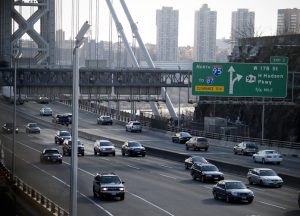 By Tim Maloney
By Tim Maloney
Manhattan is overflowing with more than 50 percent of trips in the central business district (CBD) made by motor vehicles, and the average speed for traffic has dropped to 7.1 mph (Mobility Report, 2018). The swollen arteries of the city cause a heart-stopping number of problems for pedestrians and cars. Left unchecked, the congestion crisis will get worse, and the solution needs to be right around the corner.
One solution proposed by the mayor’s Congestion Action Plan was to create a charge during peak travel times into the CBD of New York City. Although this is the first piece of legislation in the U.S. that taxes those who drive in congested areas, New York is hoping it will help raise money for new bike lanes, public transit, and other infrastructure improvements under the Traffic Mobility Act (TMA). Driving will never go away, but the driver will change. This new legislature will help create a framework that allows urban residents in New York to choose their mobility option from a diverse portfolio of options.
While the new congestion pricing legislature may ding parking revenue in the CBD, it will grow revenue on the border of the toll and will force long-term, off-street parking change in the CBD as parking demand evolves.
Parking demand will not drop substantially inside the CBD because everything needs a place to park. There are millions of people working between 60th Street and Battery Park. According to blogger Todd Schneider, NYC sees just more than 700,000 ride-share trips a day–that is a lot of parking opportunity. While drivers wait for their phones to buzz with the next rider destinations, during quick food dashes, and for restroom breaks, they will need a place to park. It is expected that facilities right outside the congestion toll line will see an increase in parking because drivers will be looking for solutions to the last mile of their commutes.
What’s next for us? We’ll talk about that tomorrow.
Tim Maloney is director of strategic partnerships with SpotHero.
